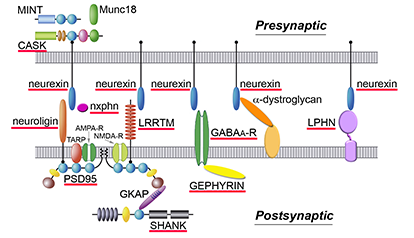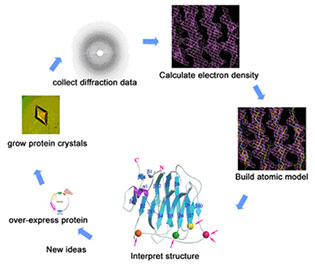 Gabrielle Rudenko, PhD
Gabrielle Rudenko, PhD
Professor, Department of Pharmacology & Toxicology
Tel: (409) 772-6292
Fax: (409) 772-9642
E-mail: garudenk@utmb.edu
Campus Location:5.114B Basic Science Bldg
Mail Route: 0647
Pubmed Publications | Lab Webpage
Research
There are an estimated hundred billion neurons in the human brain and they are connected to each other via physical contact points called synapses. Synapses enable neurons to communicate with each other. The hundreds of trillions of synapses in our brain establish neural circuitries that guide how we think, move and feel. By unraveling how the many different synaptic proteins interact with each other and form complex protein networks, we hope to not only gain fundamental insight into how neurons communicate with each other enabling the brain to function, but also to discover new potential therapeutic targets.

Our laboratory is particularly fascinated by the complex protein networks in the synaptic cleft found at chemical synapses, i.e. the 250 space between the 'pre-synaptic' membrane which hosts the exocytosis machinery for synaptic vesicles and the 'post-synaptic' membrane which hosts machinery responding to the transmitted chemical signals. We are studying a number of synaptic adhesion molecules and synaptic organizers to understand their role in mediating synapse formation, maintenance, and plasticity. One family of synaptic adhesion molecules that we have studied extensively is the family of neurexins. Neurexins play a role in synapse organization and adhesion. Mutations and lesions in neurexins have recently been implicated in autism spectrum disorder, schizophrenia and mental retardation. Excitingly, not only neurexins, but also many of their direct protein partners in the synaptic cleft are implicated in these diseases as well (Fig. 1). Neurexins and their partners must touch fundamental biological processes that are involved in the pathogenesis of these disorders, but it is not clear which processes these are and the exact role that neurexins and their partners play in these processes.

Our laboratory is working to understand on a molecular level how neurexins, their partners, as well as a number of other synaptic organizers recognize, bind, and arrange different synaptic partners in the synaptic cleft impacting synaptic function. By understanding the molecular mechanisms of these molecules, we will be able to not only further delineate their role at synapses but also understand why these molecules, when disrupted, contribute to neurological disorders. We use biochemical and biophysical techniques as well as protein crystallography. (Fig. 2).
